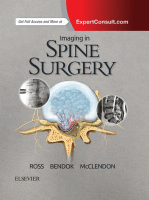Physical Address
304 North Cardinal St.
Dorchester Center, MA 02124

KEY FACTS Terminology Spinal fusion surgery recommended when curve magnitude > 40-45° for adolescent idiopathic scoliosis Adult scoliosis presents with lumbar back ± leg pain, L3-L4 rotatory subluxation, L4-L5 tilt, and L5-S1 disc degeneration on radiographs Imaging Radiographs Main thoracic,…

KEY FACTS Terminology Synonyms: Interspinous posterior decompression, interspinous distraction device, interspinous spacer device (ISD), interspinous implant Dynamic stabilization alters movement & load transmission of spinal motion segment without fusion of segment Interspinous spacing device places stenotic segment in slight flexion…

KEY FACTS You’re Reading a Preview Become a Clinical Tree membership for Full access and enjoy Unlimited articles Become membership If you are a member. Log in here

KEY FACTS You’re Reading a Preview Become a Clinical Tree membership for Full access and enjoy Unlimited articles Become membership If you are a member. Log in here

KEY FACTS Terminology Pedicle screw: Most common implant in spine surgery High rigidity and resistance to pullout Engages all 3 columns of spine Resists motion in all 3 directions Used in wide variety of procedures Maintain spine alignment while fusion…

KEY FACTS Terminology Methods to stabilize subaxial cervical spine with posterior element constructs Procedure Interspinous wiring (Rogers 1942) Simple and low risk Sublaminar wiring Attach to onlay graft material or rods Facet wiring (Callahan 1977) Facet capsules opened and holes…

KEY FACTS Terminology Cages used to reconstruct anterior spinal column after corpectomy In vivo expansion of cage permits optimal fit and correction of deformity Imaging Cylindrical metallic prosthesis along craniocaudal span of vertebral body Radiography & CT Difficult to assess…

KEY FACTS Terminology Instrumentation in fusion surgery designed to stabilize, not replace, spinal bony elements Imaging Postoperative imaging: Assess progress of osseous fusion, confirm correct positioning & integrity of instrumentation, detect suspected complications (e.g., infection or hematoma), & detect new…

Regulation Once a device becomes FDA approved and available, the physician can use the device in any manner (off-label) that he/she desires if it is in the best interest of the patient and supported by objective and appropriate peer-reviewed scientific…

KEY FACTS Terminology CT: Beam-hardening artifact and blooming artifact MR: Magnetic susceptibility artifact Image degradation related to metal prostheses/implants Imaging CT: Artifact from metal hardware related to image reconstruction algorithm, tube current, x-ray kilovolt peak, pitch, hardware composition, shape, &…